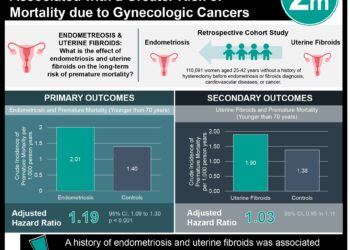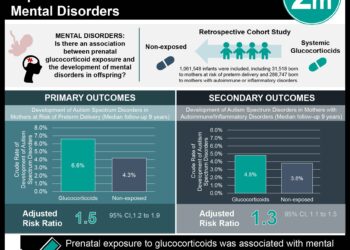Donor oocyte IVF making strides
Image: PD
1. In donor oocyte IVF cycles, embryo transfer on day 5 and single embryo transfer were positively associated with achievement of singleton term pregnancy.
2. The majority of women undergoing donor oocyte IVF have more than one embryo transferred.
Evidence Rating Level: 2 (Good)
Study Rundown: This study found that while the proportion of donor oocyte cycles resulting in term live birth has increased since 2000, there remains a discrepancy between current clinical practice and American Society for Reproductive Medicine (ASRM) guidelines. Prior work has focused primarily on the fertility outcomes of autologous oocyte in vitro fertilization (IVF). Given the growing number of women utilizing donor oocytes, the present work identifies clinical decisions associated with the likelihood of singleton live birth in donor oocyte IVF cycles.
The study is limited by a narrow definition of ideal outcome that assesses only gestational age and weight in singleton pregnancies. Future studies might incorporate inclusion of estimate for baseline health of recipient mothers, identify the prevalence of all healthy babies, including multiple gestation pregnancies and include longer term follow-up. Additionally, a study of provider knowledge and attitudes towards ASRM single embryo transfer guidelines would identify barriers to evidence-based practice.
Click to read the study in JAMA
Click to read an accompanying editorial in JAMA
Relevant Reading: Assisted reproduction using donated embryos: outcomes from surveillance systems in six countries
Study Author, Dr. Jennifer Kawwass, talks to 2 Minute Medicine: Emory University, Reproductive Endocrinology & Infertility Fellow, Department of Gynecology & Obstetrics.
“The study found an increasing trend from 2000 to 2010 in the number of donor egg cycles performed annually and in the percentage of donor cycles that resulted in a good outcome. Overall, egg donation is a good alternative for women with diminished ovarian reserve who cannot use their own eggs; use of donor oocytes and resultant good perinatal outcomes are increasingly common.”
In-Depth [prospective cohort study]: This study analyzed data from the CDC’s National ART Surveillance System to evaluate trends in practices and outcomes for donor oocyte cycles performed in 443 clinics from 2000 to 2010. The primary outcome assessed was good perinatal outcome, defined as a singleton live birth ≥37 weeks gestational age and weighing ≥2500 grams.
Over the ten-year study period, the number of donor oocyte cycles and good perinatal outcomes increased. The proportion of cycles using frozen embryos and elective single embryo transfers also increased. Good perinatal outcome was associated with embryo transfer on day 5 (OR 1.17, CI 1.04-1.32) and elective single embryo transfer (OR 2.32, CI 1.92-2.80).
By Denise Pong, MPH and Leah Hawkins, MD, MPH
More from this author: Shortage of evidence assessing teratogenic drugs, HPV infection associated with preeclampsia, Conservative treatment of recurrent ovarian tumors may preserve fertility, Recommendations for intrapartum management of TOLAC, Childbearing decreased after C-sections
© 2013 2minutemedicine.com. All rights reserved. No works may be reproduced without expressed written consent from 2minutemedicine.com. Disclaimer: We present factual information directly from peer reviewed medical journals. No post should be construed as medical advice and is not intended as such by the authors, editors, staff or by 2minutemedicine.com. PLEASE SEE A HEALTHCARE PROVIDER IN YOUR AREA IF YOU SEEK MEDICAL ADVICE OF ANY SORT.






